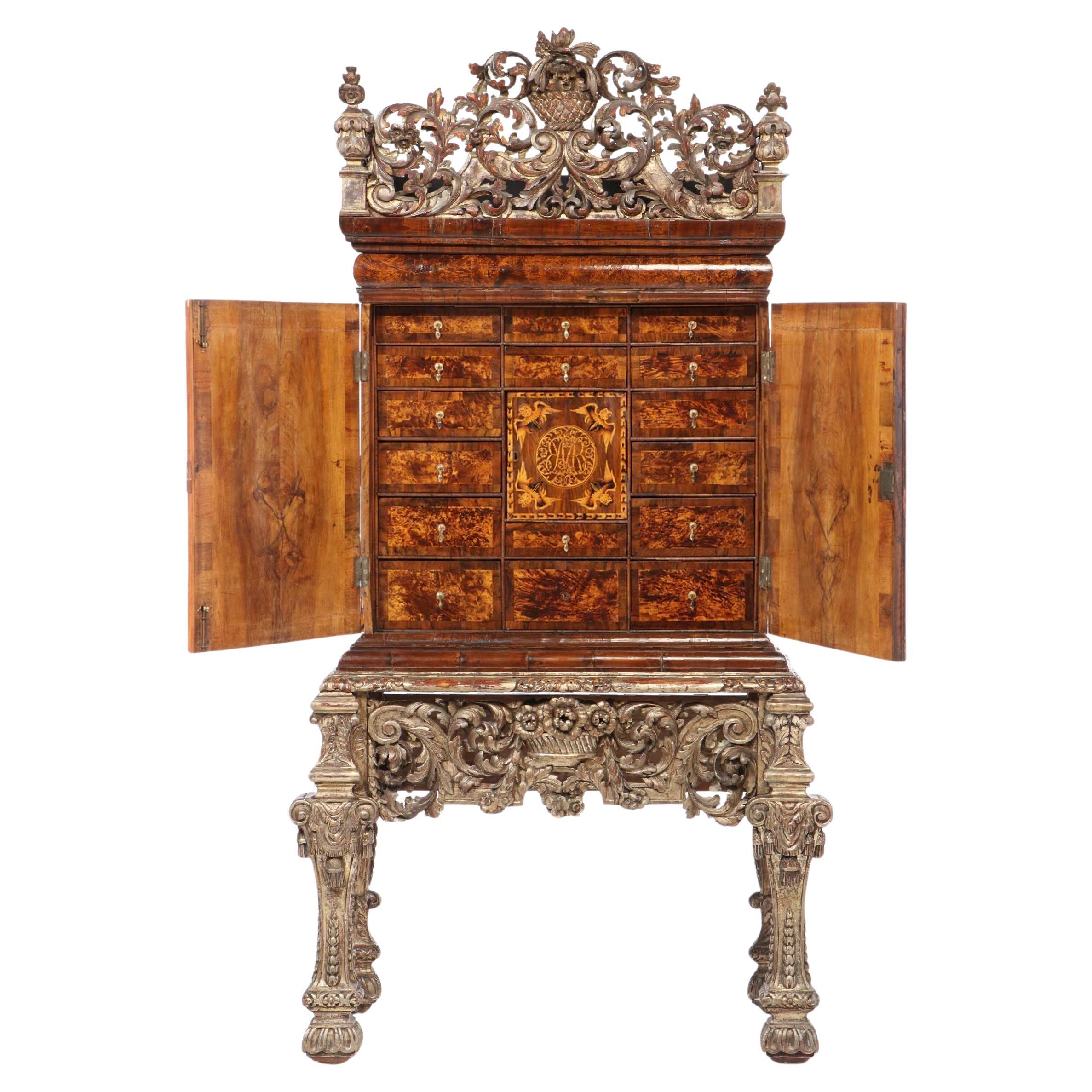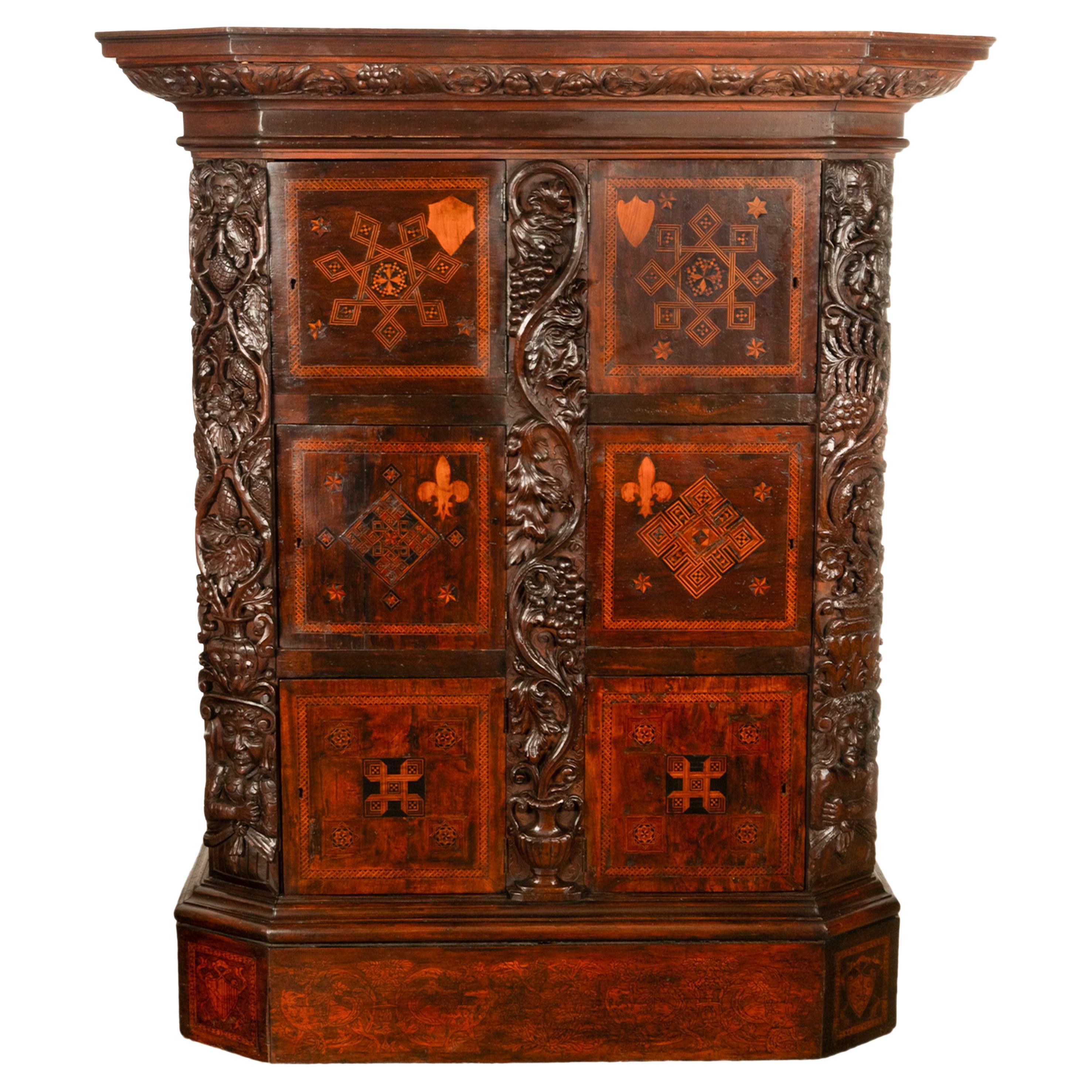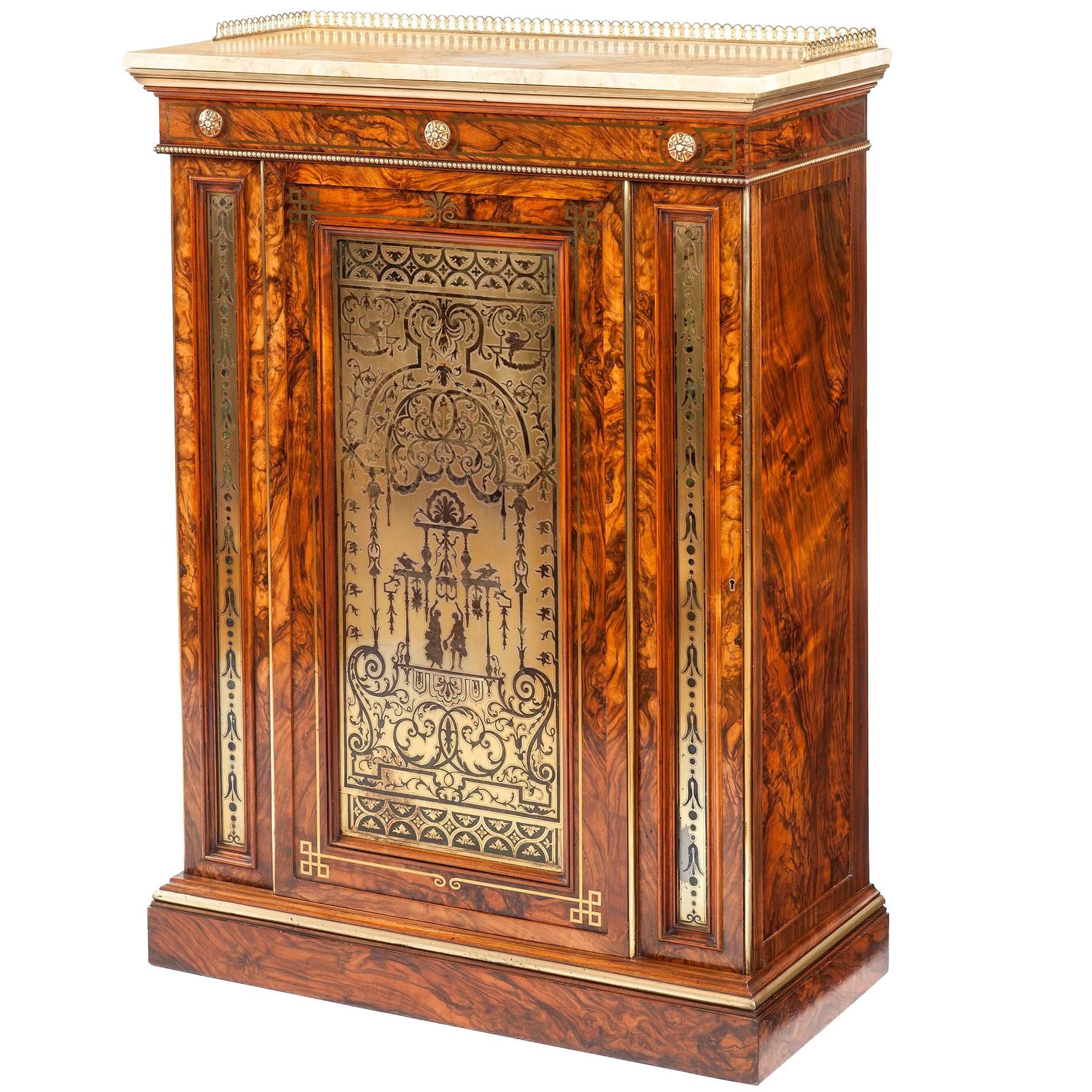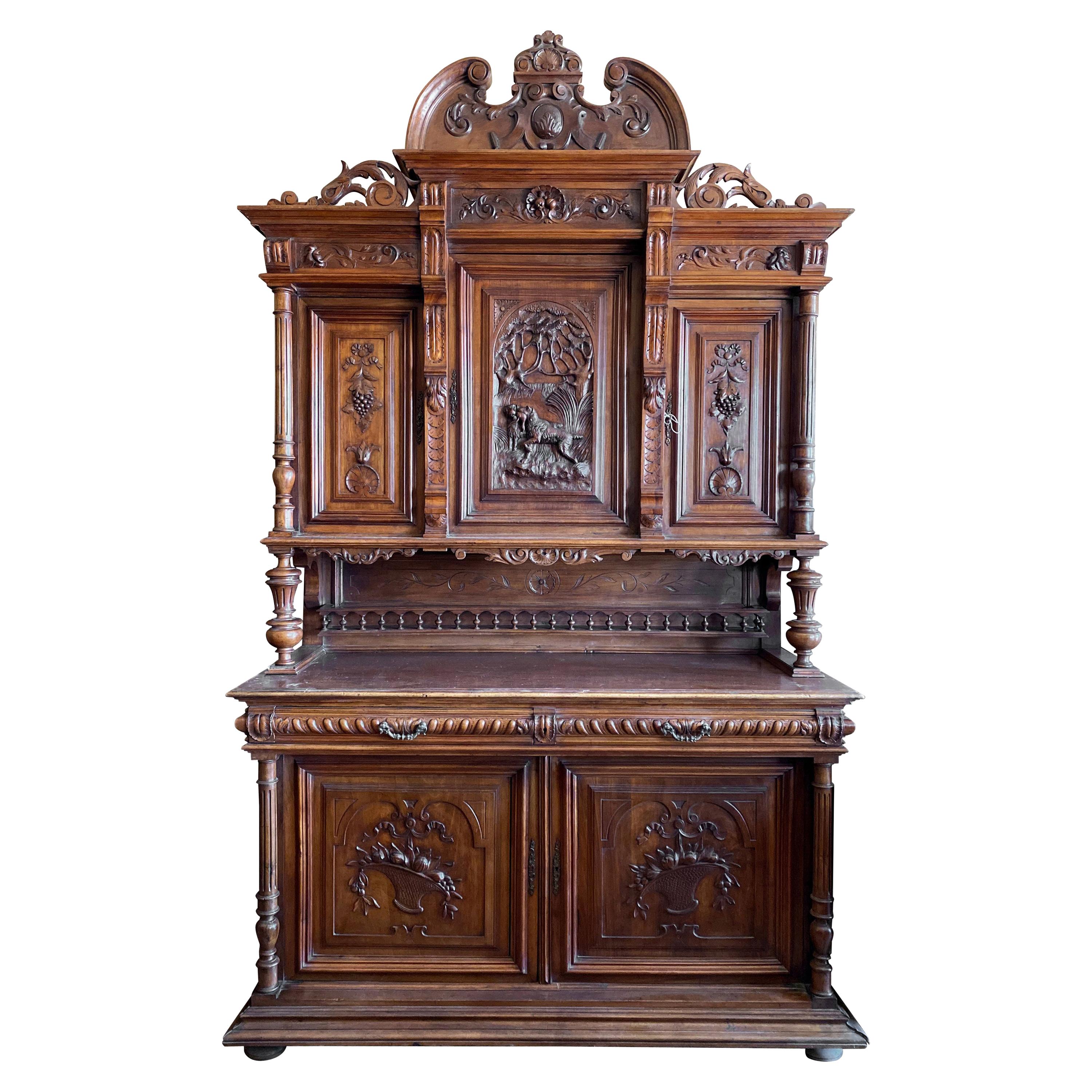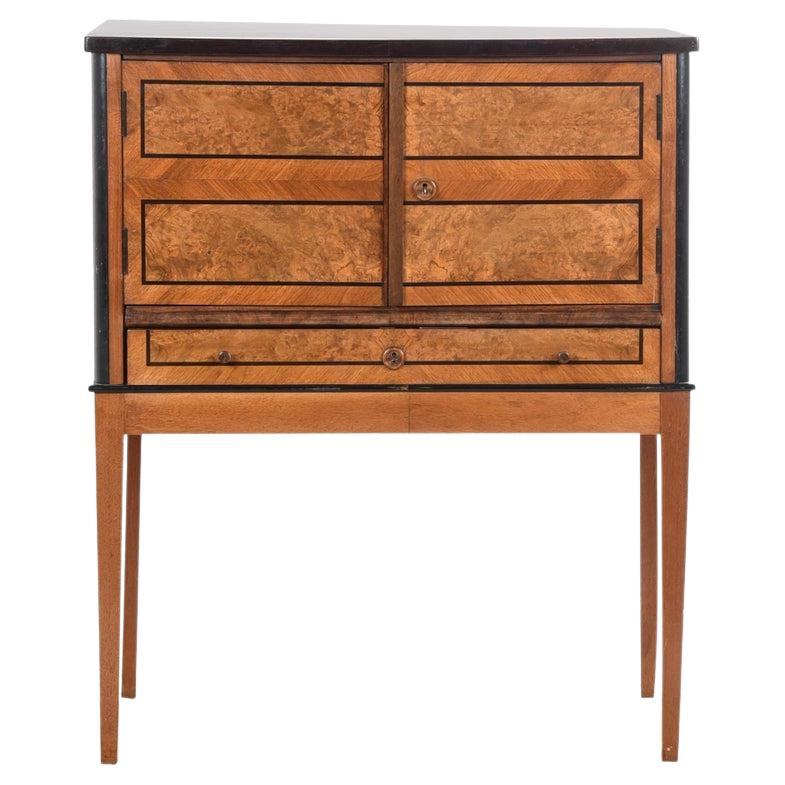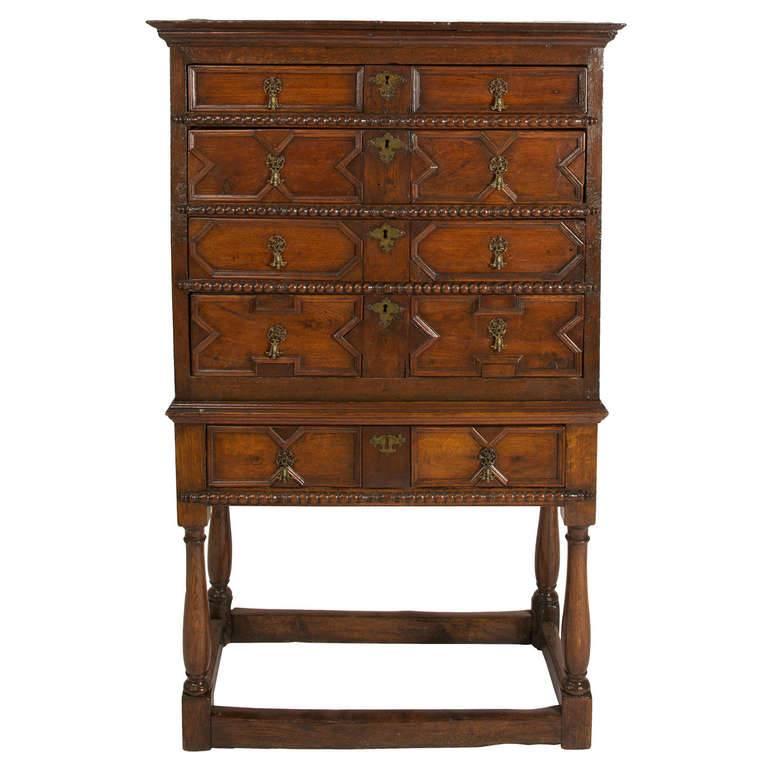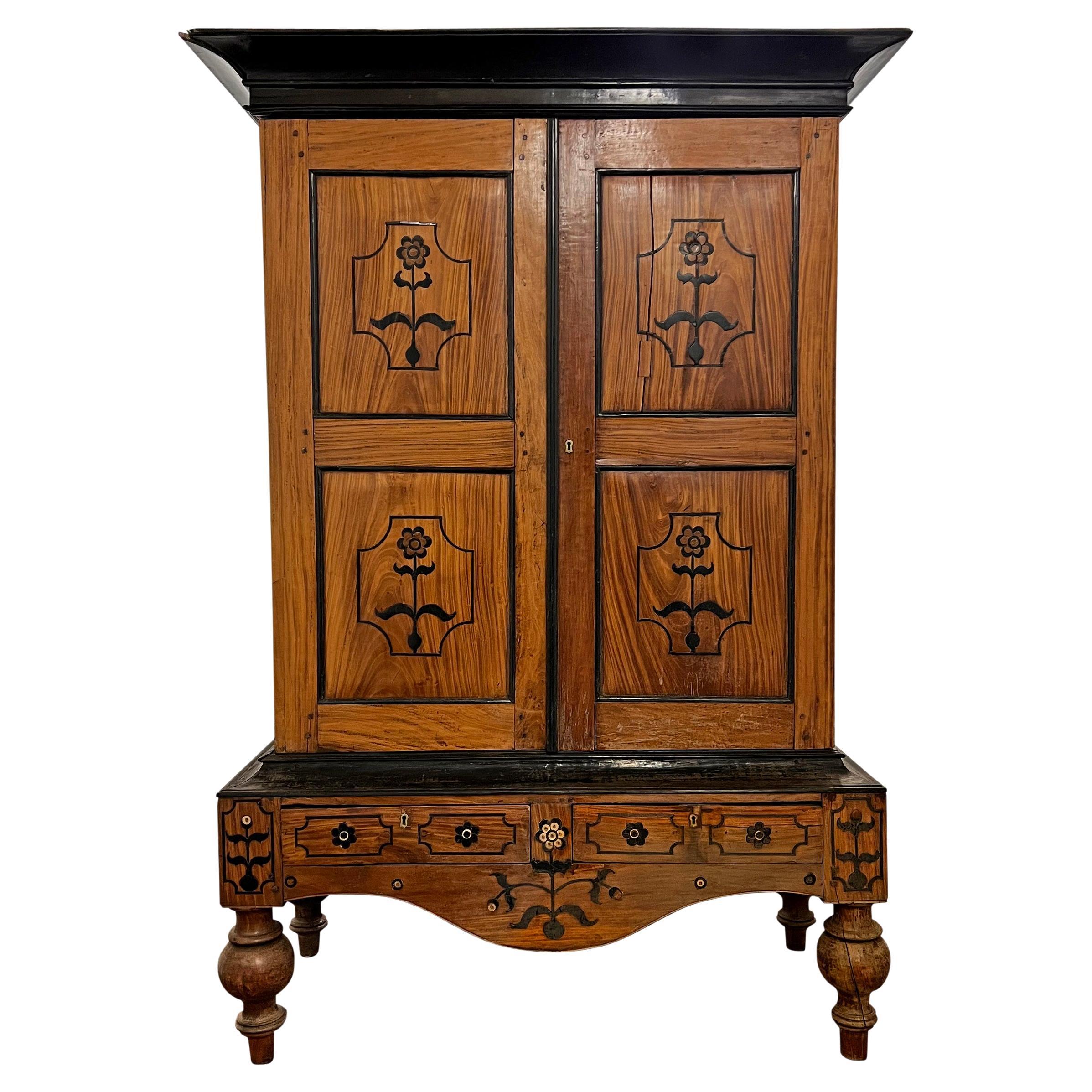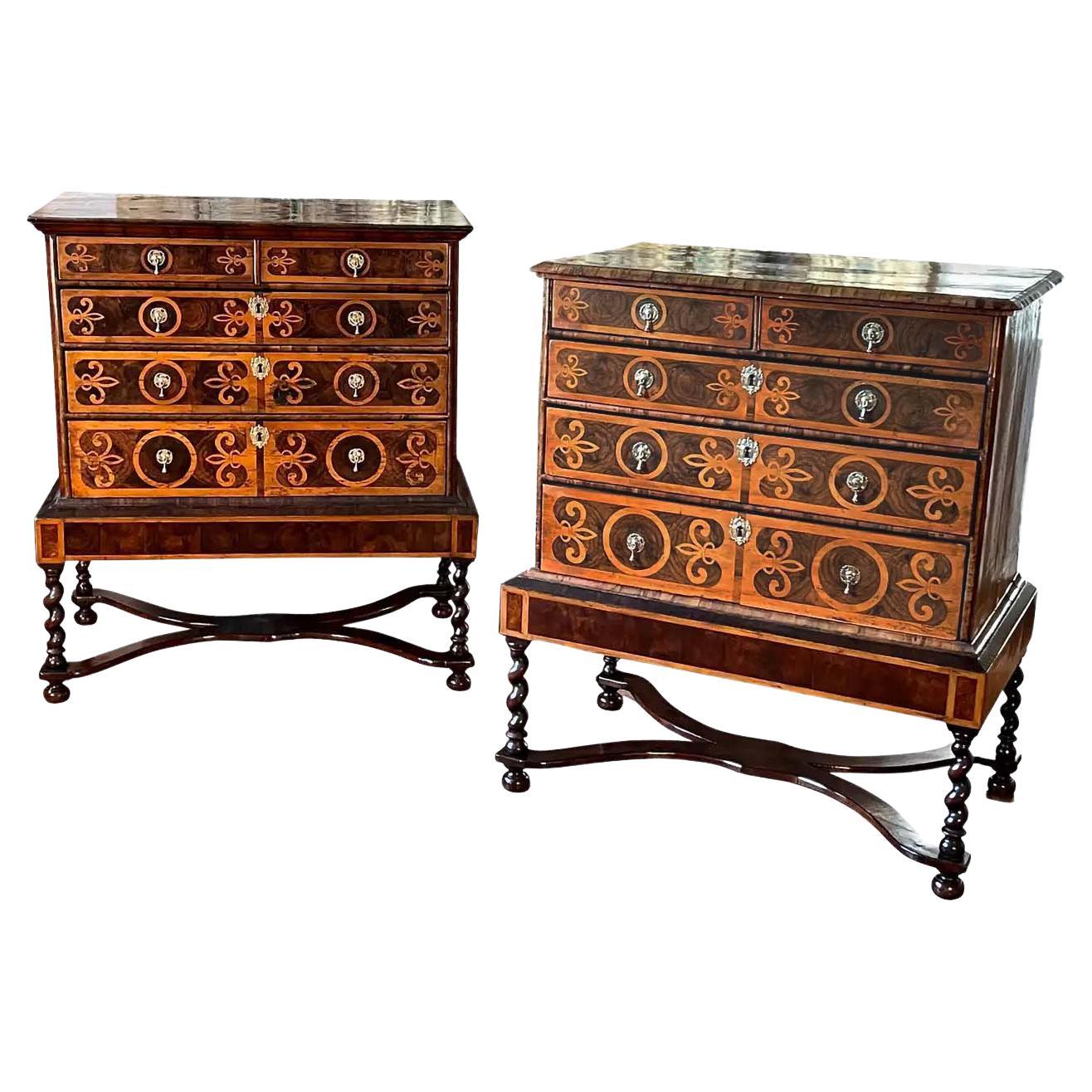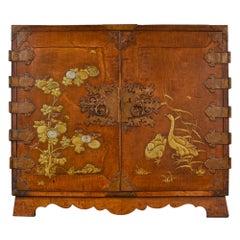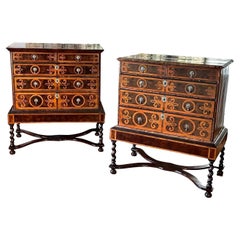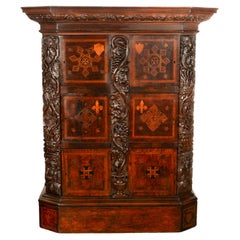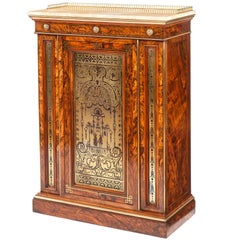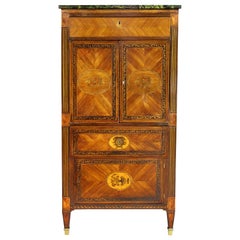
Fine Charles II Oyster Olivewood Walnut Marquetry Cabinet on Stand
View Similar Items
Want more images or videos?
Request additional images or videos from the seller
1 of 12
Fine Charles II Oyster Olivewood Walnut Marquetry Cabinet on Stand
$67,299.99List Price
About the Item
- Dimensions:Height: 61.03 in (155 cm)Width: 43.71 in (111 cm)Length: 61.03 in (155 cm)
- Style:Charles II (Of the Period)
- Materials and Techniques:
- Place of Origin:
- Period:
- Date of Manufacture:17th Century
- Condition:Wear consistent with age and use.
- Seller Location:Lymington, GB
- Reference Number:Seller: BHA 10891stDibs: LU4081117424422
About the Seller
5.0
Vetted Professional Seller
Every seller passes strict standards for authenticity and reliability
Established in 1957
1stDibs seller since 2018
36 sales on 1stDibs
Authenticity Guarantee
In the unlikely event there’s an issue with an item’s authenticity, contact us within 1 year for a full refund. DetailsMoney-Back Guarantee
If your item is not as described, is damaged in transit, or does not arrive, contact us within 7 days for a full refund. Details24-Hour Cancellation
You have a 24-hour grace period in which to reconsider your purchase, with no questions asked.Vetted Professional Sellers
Our world-class sellers must adhere to strict standards for service and quality, maintaining the integrity of our listings.Price-Match Guarantee
If you find that a seller listed the same item for a lower price elsewhere, we’ll match it.Trusted Global Delivery
Our best-in-class carrier network provides specialized shipping options worldwide, including custom delivery.More From This Seller
View AllFine and Rare 17th Century Japanese Mulberry Wood Gilt-Lacquer Cabinet on Stand
Located in Lymington, GB
An outstanding and rare, 17th-century Japanese mulberrywood gilt-lacquer cabinet raised on a later stand.
This fine and exceptional two-door, gilt-heightened cabinet - reputedly in mountain mulberry wood...
Category
Antique 17th Century Japanese Cabinets
Materials
Lacquer
Fine Rare Pair 17th Century Oyster Walnut Chests on Stands
Located in Lymington, GB
A fine, and rare, very closely-matched pair of late-17th century oyster walnut chests on stands.
English, Charles II period, ca 1685.
Both with f...
Category
Antique 17th Century English Charles II Commodes and Chests of Drawers
Materials
Walnut
William & Mary Period Oyster Laburnum and Walnut Chest
Located in Lymington, GB
An English William & Mary-period oyster laburnum and walnut chest, circa 1700.
William lll (1650-1702).
A classic oyster-veneered chest of two short and three long graduated drawers all faced with exquisite oyster veneers banded in fruitwood. The top with well-chosen oyster inlays...
Category
Antique Early 18th Century English William and Mary Commodes and Chests ...
Materials
Walnut
A Fine Old & Ody George I Burr Walnut Secretaire Cabinet
Located in Lymington, GB
A fine English George I-period burr (burl) walnut secretaire cabinet attributed to Old & Ody.
Early-18th century, ca 1720.
The top section separates from the base and opens to reveal numerous fitted drawers, behind doors with original bevelled arched mirror plates.
The base contains a fall-front fitted secretaire with small drawers, two of which have secret drawers. Engraved mounts are contemporary if not original. All locks and cross-grained mouldings are original.
Beautiful deep rich colour throughout, with superb matched burr veneers within herringbone lines.
Bun feet are original. Lined throughout in best-quality English oak.
The well patinated, green, gilt-tooled liner in the writing surface appears original. In excellent condition overall.
Very much in the style of John Old & William Ody.
One of the most original early-18th century pieces of English walnut cabinet...
Category
Antique 18th Century English George I Cabinets
Materials
Walnut
Fine Pair George III Gillows Pedestal Cabinets
Located in Lymington, GB
A fine pair of English George lll-period pedestal cabinets in well-figured mahogany of deep, rich colour and superb patination, attributed to Gillows of Lancaster, circa 1800.
The f...
Category
Antique 19th Century English George III Cabinets
Materials
Mahogany
Charles II Oak and Walnut Chest of Drawers
Located in Lymington, GB
Charles II period (1630-1685) oak and walnut chest of drawers, or commode.
Retaining old waxed surfaces of very good rich color and patination.
With typical geometric drawer fronts and side runners, confirming a late 17th century date of c 1680.
Walnut panel inserts to the drawer fronts.
Retains its original stile feet and the base with its original bold moulding.
Brass key escutcheons...
Category
Antique 1680s English Charles II Commodes and Chests of Drawers
Materials
Oak, Walnut
You May Also Like
Charles II Walnut, Mulberry Marquetry Cabinet, Gilt Stand, 17th C H.F. du Pont
Located in Brooklyn, NY
Charles II walnut and mulberry marquetry cabinet on giltwood stand, c. 1650-1670. Giltwood cresting and stand appear to be from a few decades later.
The form of furniture now described as a cabinet developed across Spain and France in the 16th Century. In architecture, a cabinet is a small private room for the housing or display of precious objects, hence the term could be aptly applied to the small, portable pieces of furniture made for the carriage and display of valuable items and able to stand upon a table, trestle stand...
Category
Antique Mid-17th Century British Charles II Cabinets
Materials
Walnut
$130,480 Sale Price
30% Off
Antique Flemish / Dutch Walnut Marquetry Royal Manuscript Cabinet, circa 1680
Located in Portland, OR
Antique Flemish / Dutch walnut marquetry Royal Manuscript cabinet, circa 1680. The cabinet possessing a stepped cornice with a carved frieze of frui...
Category
Antique Late 17th Century Dutch Baroque Cabinets
Materials
Walnut
19th Century English Olivewood and Brass Inlaid Cabinet
By Town & Emanuel
Located in London, GB
A William IV cabinet attributed to Town and Emmanuel
Constructed in a strongly grained olivewood and dressed with gold brass inlays and an etched and engraved brass panel; rising from a plinth base, the lockable single door having an inset panel in the manner of Jean Berain, enclosing a shelved interior, and flanked by narrow vertical conforming panels; the apron being dressed with three bronze rosettes, and the Jura Jaune marble is dressed with a three quarter arcaded brass gallery,
circa 1830
The cabinet is illustrated and discussed in Christopher Payne’s “British Furniture 1820 to 1920” published in 2023. Payne singles out the rarity of the olivewood timber used as well as the necessity for hand cutting the large marquetry panel.
Literature:
Payne, Christopher. British Furniture 1820 to 1920 : The Luxury Market. ACC Art Books, 2023, pp. 38-39 (illus. fig. 1.33).
Town and Emanuel
Recorded in the 'Dictionary of English Furniture Makers 1660-1840', published by the Furniture History Society, as being situated at 103 New Bond Street between 1830 and 1840, and apart from being manufacturers of furniture, also dealt in 'curiosities and antiques'. The late renowned connoisseur Christopher Gilbert records in his 'Pictorial Dictionary of Marked London Furniture' London 1997, also published by the Furniture History Society, a writing table in the Transitional manner with similar plaques. Their label reads 'Town and Emanuel, manufacturers of Buhl Marquetrie, Resner (sic) & Carved Furniture, tripods, screens & c. of the finest and most superb designs of the Louis 14th. Splendid cabinets and tables inlaid with fine Sevres and Dresden china...
Category
Antique 19th Century English Regency Cabinets
Materials
Marble, Brass
Italian Neoclassic Style Marquetry Cabinet
Located in Essex, MA
Rectangular faux marble top over a case with a single drawer over a pair of cabinet doors opening to a fitted interior with drawers, over a drawer and a door, sides with similar deco...
Category
Antique Early 19th Century Italian Neoclassical Cabinets
Materials
Wood
Henry II Cabinet
Located in Dallas, TX
This intricately carved, beautiful wooden cabinet originates from France circa 1890. The center cabinet features a scene depicting a labrador carrying a catch of the day from hunting...
Category
Antique 19th Century French Cabinets
Materials
Wood
$15,600
Antique Charles II Revival Polychrome lacquered cabinet on stand C.1920
Located in London, GB
Antique Charles II Revival Polychrome lacquered cabinet on stand C.1920
Early 20th century, with a pair of doors enclosing a mirrored cocktail cabinet interior, raised on a carved a...
Category
Early 20th Century English Charles II Cabinets
Materials
Brass
Recently Viewed
View AllMore Ways To Browse
Sugar Cabinet
Dictionary Stand Antique
Dictionary Stand
Oystering Marquetry
Olivewood Desk
Antique Elm Cabinet
Tall Painted Cabinet
Cabinet With Stepped Doors
Corner Cabinet Glass Door
Antique Brass Medallions
Antique Early American Cabinet
French Counter
Melamine Furniture
Antique Pine Shelves
Mid Century Sliding Glass
Small Industrial Cabinet
Post Modern Kitchen Cabinets
Chinese Panels Doors
